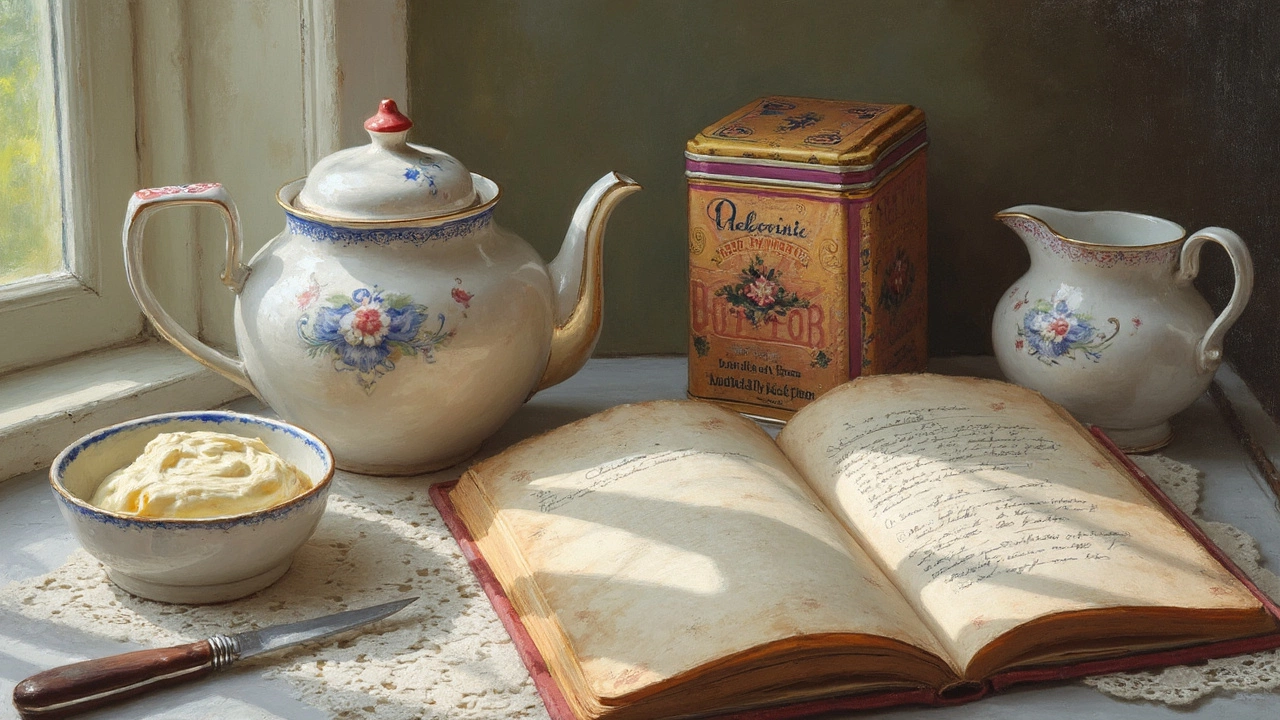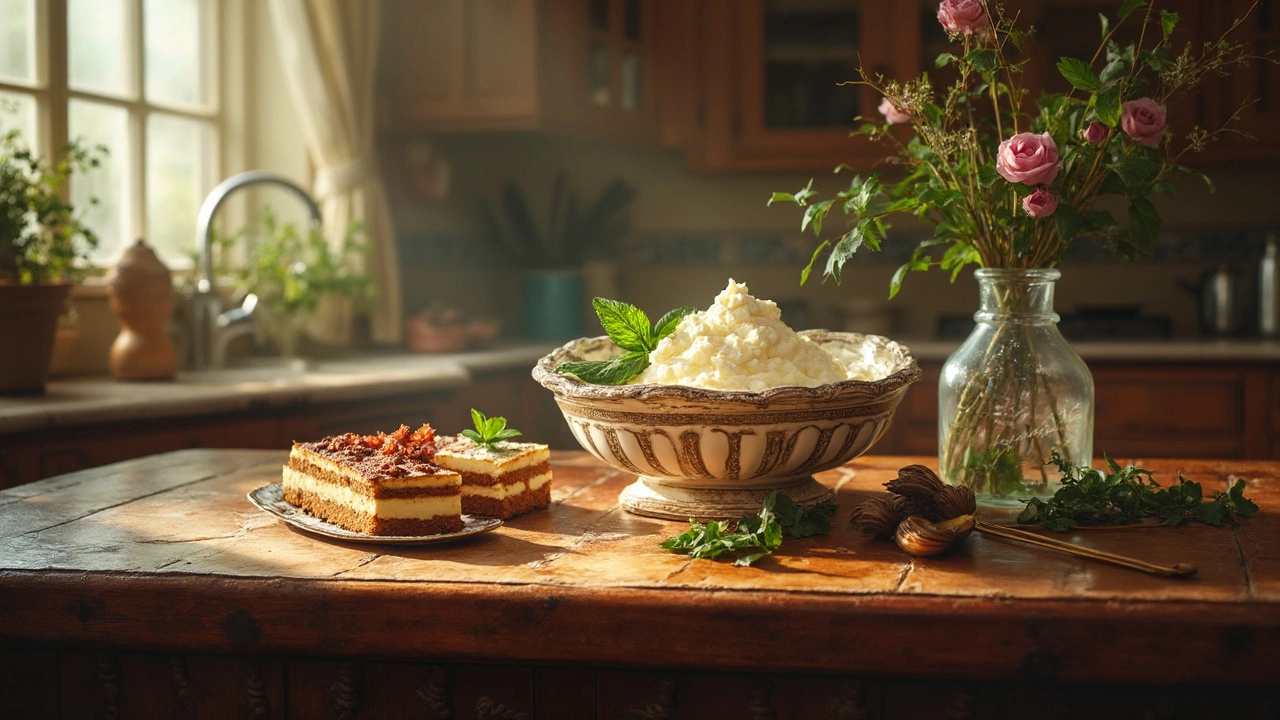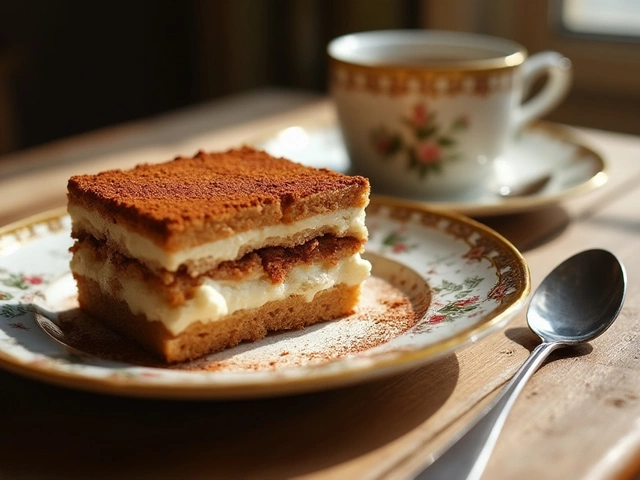If you love making tiramisu as much as I do, you've probably wondered about the best way to store mascarpone cheese when you've got leftovers. I mean, how often do you really end up using that whole tub in one go?
Let's cut to the chase: Yes, you can freeze mascarpone cheese, even though it might sound a bit unusual at first. But, there are a few tricks to doing it right to keep that luscious, creamy texture intact.
What makes mascarpone so special, aside from its role in everyone's favorite Italian dessert? It's that rich, buttery taste and silky texture. Freezing can change this, so we've got to be smart about it.
- Understanding Mascarpone Cheese
- Freezing Mascarpone Cheese
- Thawing and Using Frozen Mascarpone
- Benefits and Drawbacks of Freezing
- Tips for Perfect Storage
Understanding Mascarpone Cheese
Mascarpone cheese is the secret behind that perfectly creamy tiramisu and countless other delightful desserts. Originating from Italy, this cheese is loved for its rich, buttery flavor and soft, spreadable texture. It's not aged like many cheeses, which keeps it fresh and mild in taste. What makes it different? Well, it's made from cream with a bit of tartaric acid, which is unlike the rennet used in making most cheeses.
Mascarpone cheese is super versatile. You can sweeten it with sugar or honey for dessert dishes or use it in savory recipes, like a creamy pasta sauce or even in a dollop on soups. But, it's what it does to a regular coffee-flavored tiramisu that makes everyone go “wow!”
One might think that since mascarpone is cheese, it might behave like a block of cheddar or gouda in the fridge. However, its high-fat content gives it that creamy consistency, making it more sensitive to storage conditions.
If you're curious about nutrition, a 100 gram serving of mascarpone contains approximately 429 calories, most of which come from fat. But hey, it's not about counting calories when chasing that delicious taste!
Freezing Mascarpone Cheese
Freezing mascarpone cheese might sound a bit tricky, but with the right approach, you can successfully store it for future use. Let's break it down so you can make sure it stays as delicious as it was when fresh.
Steps to Freeze Mascarpone Cheese
- Use an Airtight Container: Transfer the mascarpone to an airtight container or use heavy-duty freezer bags. This helps prevent freezer burn and keeps the cheese's moisture intact.
- Label It: Always label the container with the date before you pop it in the freezer. You'll thank yourself later when you're digging through your freezer.
- Freeze in Portions: Consider freezing it in portions you’ll likely use at one time. This way, you don't have to defrost the entire batch if you only need a little.
- Seal Properly: If using bags, press out as much air as possible before sealing. This minimizes ice crystal formation, which can mess with the texture.
What Happens to Mascarpone in the Freezer?
Most cheeses, including mascarpone, contain a good amount of water. When frozen, the water forms crystals, messing with that creamy texture we all love. But don’t worry, this doesn’t mean you have to toss it from your tiramisu recipe book.
If you’re seeing a little separation or graininess after thawing, a quick fix is to stir in a splash of cream or milk to help bring back some of that smoothness.
How Long Does It Keep?
Frozen mascarpone cheese can last about two months. Try to use it within this timeframe for the best results. After this period, it could start losing its top-notch quality. Remember, it’s always a good idea to jot down the date on the container!
Freezing mascarpone cheese might seem odd, but when you ace the storage, your tiramisu won’t know the difference!

Thawing and Using Frozen Mascarpone
Thawing mascarpone cheese isn't just about sticking it on the counter for a while. There's a bit of an art to it if you want to keep that creamy goodness intact. Start by moving it to the fridge the night before you plan on using it. This slow thawing process helps to retain its texture as much as possible.
Steps to Thaw Properly
- Transfer the mascarpone from the freezer to the fridge. Give it at least 12 hours to defrost fully. No shortcuts!
- Once thawed, check the texture. It might look a little grainy or separated, but don’t panic just yet.
- To restore its smoothness, give it a good stir or a gentle whisk. You can add a splash of cream if you notice it's particularly thick.
But here's the secret sauce: Use it wisely after thawing. For cooking purposes, slightly separated mascarpone is typically just fine. It’s perfect for making sauces or adding richness to a pasta dish.
Using Thawed Mascarpone for Tiramisu
If you’re adding frozen mascarpone to your beloved tiramisu, you want it as smooth as possible. After stirring it back to life, mix it into your coffee and cream concoctions as you usually would.
Table of Do's and Don'ts
| Do's | Don'ts |
|---|---|
| Thaw in the fridge. | Thaw at room temperature. |
| Stir well before use. | Leave it lumpy. |
Being careful with how you thaw and use your frozen mascarpone can make a big difference in your final dish!
Benefits and Drawbacks of Freezing
When it comes to preserving mascarpone cheese, freezing might be a tempting option, but it's not all rainbows and butterflies. Let's dig into the perks and the not-so-great outcomes of tossing mascarpone into the freezer.
Benefits of Freezing Mascarpone
The first big win? Extending shelf life. If you've got leftover mascarpone that you can't use before it spoils, freezing keeps it usable for several weeks longer. This can save you a few bucks in the long run if you're a frequent tiramisu maker or enjoy experimenting with creamy dishes.
Another plus is convenience. Freeze your mascarpone in portioned amounts, and you can grab exactly what you need when a craving hits. Just pull out a portion, thaw it, and it's good to go—no need to buy another full container.
Drawbacks of Freezing Mascarpone
Now, onto the downsides. One chief complaint about frozen mascarpone is that it can lose its perfect, silky texture once thawed. Ice crystals form during freezing, and when they melt, they might separate from the creamy portions of the cheese, making it a bit watery.
While the texture might suffer, the flavor often remains mostly intact. Still, it might not be your top choice for dishes where mascarpone is the star, like in the layers of a tender tiramisu.
Balancing these pros and cons comes down to what you're willing to accept when it comes to your cheese. If texture is a dealbreaker, you might want to reconsider. But if you're all about getting every bit of use out of your food, then freezing can be a handy tool in your culinary toolbox.

Tips for Perfect Storage
Making sure your mascarpone cheese stays creamy and flavorful involves a few key steps. First off, use airtight containers that won't let any air sneak in. You know those pesky little ice crystals you find on freezer-burned food? Yeah, those will ruin your cheese faster than you can say tiramisu.
Divide Before Freezing
If you know you won't use it all in one go, portion the mascarpone cheese before freezing. Divide it into small, recipe-sized containers or use zip-lock bags to make life easier when thawing later.
- Use clean utensils to avoid contamination.
- Label each container with the date, so you keep track of when you stored it.
Controlling Temperature
Your freezer should be set at the right temperature — below 0 °F (-18 °C). This might sound like a no-brainer, but a stable temperature helps in maintaining the texture and flavor of your cheese. Avoid putting it near the freezer door, where temperatures vary more.
Maintaining Quality
Use your frozen mascarpone cheese within one to two months for the best quality. Beyond that, it might start to lose some of its rich, creamy goodness. When you're ready to use it, thaw it overnight in the fridge. Never rush this in the microwave or by leaving it out — that can mess with its texture.
Stir well after thawing to restore some of that original smoothness. If it's not as creamy as before, try whipping it a bit. Remember, even though freezing might change the texture slightly, it'd still work great in recipes like tiramisu or as a filling where it mixes with other ingredients.





